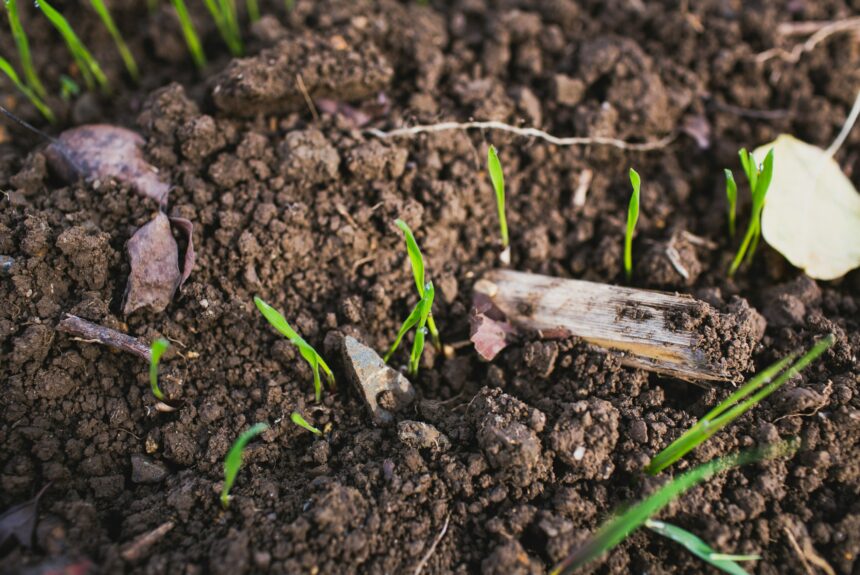Innovators, scientists, and engineers around the world are constantly looking for cost-effective ways to reduce carbon dioxide emissions. One such solution is an ancient process with modern potential: enhanced weathering.
Enhanced weathering, or carbon mineralization, involves accelerating the natural process by which minerals in rocks react with CO2 from the atmosphere, thereby locking away carbon while also enriching soils and benefiting agriculture.
>>>READ: Lithos Carbon is Using Enhanced Rock Weathering to Capture CO2
At its core, enhanced weathering is a natural process that has been occurring for millions of years, albeit at a slow pace. It involves the chemical breakdown of silicate rocks, such as basalt, which react with atmospheric CO2 to form new rocks that trap carbon dioxide in the soil for thousands of years. By accelerating this process through various means, such as grinding rocks or concrete into fine particles and spreading them over agricultural land, companies are exploring ways to ramp up enhanced weathering as a natural carbon removal and storage solution.
One of the most compelling aspects of this rock dust is its dual benefit for soil health and agriculture. As the rocks weather, they release essential nutrients such as calcium, magnesium, and potassium, which enrich the soil and enhance its fertility. This process, known as mineral fertilization, can lead to increased crop yields and improved resilience to drought and other environmental stresses.
Moreover, the bicarbonate ions formed during weathering can help neutralize soil acidity, creating a more favorable environment for plant growth. For farmers, this means healthier soils, higher yields, and greater food security. In fact, one recent study examined the benefits of enhanced weathering in the Corn Belt and found that corn and soybean yields increased significantly, noting improved soil fertility, greater crop nutrition, and decreased soil acidification.
Beyond its immediate benefits for soil and agriculture, enhanced weathering holds immense potential for carbon sequestration—the process of capturing and storing carbon dioxide to mitigate climate change. By removing CO2 from the atmosphere and locking it away in stable mineral forms, enhanced weathering offers a long-term solution for reducing greenhouse gas emissions and stabilizing the climate. A study from the University of Sheffield in the UK suggests that widespread implementation of enhanced weathering could remove two billion tons of CO2 from the atmosphere annually.
While cost remains a concern, the potential for enhanced weathering as a widely deployable carbon dioxide removal solution is very promising. The economic and environmental value it produces outside of carbon sequestration means there is an economic incentive to pursue it. However, the full potential of enhanced weathering as a climate solution requires careful consideration of its implementation and accounting mechanisms, particularly in the context of voluntary carbon offset markets.
>>>READ: What’s the Future of Direct Air Capture?
While the concept of using enhanced weathering as a carbon offset strategy is promising, it raises important questions about how to accurately measure and verify the carbon removal. Unlike other forms of carbon sequestration, such as afforestation, direct air capture, or carbon capture and storage, enhanced weathering operates on longer timescales and involves complex geological processes that are challenging to monitor and quantify.
To ensure the integrity and credibility of enhanced weathering as a carbon offset solution, it is essential to develop robust accounting methodologies that accurately measure the amount of carbon removed from the atmosphere and stored in the earth’s crust. This requires a combination of field experiments, laboratory analyses, and modeling studies to assess the effectiveness of different weathering techniques and their impact on soil carbon storage. Additionally, transparent reporting standards and independent verification mechanisms are needed to prevent greenwashing and ensure that carbon offsets generated through enhanced weathering represent genuine emissions reductions.
Enhanced weathering offers a promising pathway to mitigate climate change while simultaneously improving soil health and agricultural productivity. Realizing the full climate potential of enhanced weathering requires concerted efforts to address technical, financial, and regulatory challenges, ensuring that it can be effectively integrated into carbon offset markets and agricultural investments.
The views and opinions expressed are those of the author’s and do not necessarily reflect the official policy or position of C3.
